 January 31, 2019 John E. Ross, KD8IDJ, Editor
| ||||||
Brief ARRL Website Outage Planned for Wednesday, February 13 Some services on the ARRL website may be interrupted briefly on Wednesday, February 13, sometime between 1100 UTC and 1300 UTC. This outage is to accommodate a hardware test of the existing failover system for all systems behind the Rackspace firewall. Affected systems are the main website, including the ARRL Store and contesting-related pages. Logbook of The World (LoTW), email, and Headquarters will not be affected. We apologize for any inconvenience. ARRL Board of Directors Tackles Ambitious Agenda A demanding agenda faced the ARRL Board of Directors when it convened for its annual meeting on January 18 - 19 in Windsor, Connecticut. President Rick Roderick, K5UR, chaired the session. Several new faces were around the table, with four newly elected ARRL Directors, one newly elected Vice Director, and one recently appointed Vice Director. Attending for their first meeting as Board members were Hudson Division Director Ria Jairam, N2RJ; New England Division Director Fred Hopengarten, K1VR; Northwestern Division Director Mike Ritz, W7VO, and Roanoke Division Director George "Bud" Hippisley, W2RU. Also present were Northwestern Division Vice Director Mark Tharp, KB7HDX, and Rocky Mountain Division Vice Director Robert Wareham, N0ESQ, who was appointed last fall to fill a vacancy.
On a voice vote, the Board authorized $485,000 to fund a project to be carried out by Connecticut media and advertising consultants Mintz & Hoke, to develop lifelong learning strategies and programs aimed at attracting and retaining ARRL members, especially newly licensed radio amateurs. "Our focus is on expanding the reach of ARRL by providing instructional materials to Amateur Radio operators who have a wide range of interests and experience levels," ARRL Lifelong Learning Manager Kris Bickell, K1BIC, remarked this week. The program will offer a modern, user-friendly educational environment with various learning paths, such as getting on the air, public service, technological experimentation, and advanced operating and technical tips, Bickell said. The Board adopted an ARES plan as recommended by the Programs and Services Committee. Committee Chair Dale Williams, WA8EFK, said the ARES plan will establish training programs and three levels of ARES membership. It also revises ARES appointment definitions and designates the Emergency Coordinator (EC) as the lead person in local activations. Section and District Emergency Coordinators will serve as resources.
The Board also established an EmComm Manager Requirements Committee, charged with setting the requirements for ARRL's Emergency Preparedness and Response Manager function. The Board received the report of ARRL CEO Howard Michel, WB2ITX, who outlined plans to reorganize and refocus the activities at ARRL Headquarters. Michel said providing better value to membership is a top priority, and he sees value creation and value delivery as key components to long-term membership retention and growth. Addressing an ARRL governance issue, the Board repealed the ARRL Policy on Board Governance and Conduct of Members of the Board of Directors and Vice Directors, commonly known as the "Code of Conduct," on an 11-3 vote with one abstention. The Board voted unanimously to create a Legal Structure Review Committee to study and make recommendations to update ARRL's legal structure "to reflect ARRL's current operational needs." The Board created a permanent Amateur Radio on the International Space Station (ARISS) Committee "to develop an interactive relationship" with ARISS, which sponsors voice contacts between ISS crew members and school groups and gatherings on Earth, "bringing together STEM program objectives and local Amateur Radio groups." The Board motion said ARISS "has demonstrated very positive public relations benefits to the ARRL, and that it's ARRL's best interests to support ARISS."
As already announced, the Board withdrew, without prejudice to refiling, ARRL's December 18, 2018, Petition for Rule Making to the FCC, which sought to amend the Part 97 Amateur Service rules to incorporate the provisions of the Amateur Radio Parity Act (ARPA). The Board said that ARRL needs to "review, re-examine, and reappraise ARRL's regulatory and legislative policy with regard to private land use restrictions." In other business, the Board:
Minutes of the annual meeting have been posted. FCC Digging Out from Beneath Shutdown Backlog In the wake of the more-than-month-long partial government shutdown, the FCC has set about tackling a backlog of applications already in the queue. At first, it sought to hold back the flood as it dug out, asking that Volunteer Examiner Coordinators (VECs) give the agency a little breathing room before submitting any additional new files. On Monday, services using the FCC electronic batch filing (EBF) system -- including commercial and amateur -- received an automated message from the FCC updating users on the situation.
"The FCC worked through its backlog very quickly, and started processing our files about noon today," Assistant ARRL VEC Manager Amanda Grimaldi, N1NHL, said on Wednesday. "We're slowly submitting the files we have in queue -- we don't want to bombard them! Assuming there are no hiccups, everyone should see their applications processed by the close of business on Thursday." The ARRL VEC had piled up some 2,700 pending Amateur Radio applications, many of them from 425 ARRL VEC examination sessions that took place during the shutdown or immediately prior to it. These do not include files that the other 13 VECs may have ready to upload. As it attempts to dig out from beneath a blizzard of applications from all services, the FCC this week reset some filing deadlines and established new receipt dates. The FCC said filings due between January 3 and January 7 (inclusive) will be due on January 30. Filings that would otherwise be required to be filed between January 8 and February 7 will be due on February 8. The FCC said all ULS applications and notifications originally due on January 3 through February 8 (inclusive) are now due on February 8, 2019. "In addition, all Universal Licensing System (ULS) filings that were held during the lapse in funding through January 25, as well as any other ULS filings that were held from January 26 through January 29, will be considered received on January 29," the FCC said. The large volume of filings submitted during the partial government shutdown will be entered into ULS in batches and assigned a January 29 receipt date, the FCC said. That includes Amateur Radio vanity call sign applications filed via ULS or by mail between January 3 and January 29, which will be treated as filed on January 29. Ordinarily, vanity call sign applications are processed on a daily basis, with a random selection procedure used to determine the processing order for applications filed on the same day. The FCC said changes in receipt dates were made "in order to accommodate the orderly resumption of business." ARRL Board Bestows Bill Leonard, W2SKE, Media Awards During its annual meeting on January 18 - 19, the ARRL Board of Directors named the recipients of two ARRL Bill Leonard, W2SKE, Professional Media Awards. Recipients were recommended for the award by the ARRL Public Relations Committee, with the concurrence of the Programs and Services Committee. Tom Knapp of lancasteroneline.com and the LNP Media Group Inc. of Lancaster, Pennsylvania, was named as the 2018 Bill Leonard, W2SKE, Professional Media Award for Print Reporting recipient. The Board said Knapp "went above and beyond to capture the workings of Field Day at W3RRR, the Red Rose Repeater Association."
The Board named Andrew Schmertz and New Jersey Television (NJTV) as recipients of the 2018 Bill Leonard, W2SKE, Professional Media Award for Video Reporting. The Board cited Schmertz and NJTV for "outstanding coverage" of the February 23 - 24, 2018, HamSCI conference at New Jersey Institute of Technology (NJIT). NJIT Assistant Research Professor Nathaniel Frissell, W2NAF, the cofounder of HamSCI and instrumental in organizing the Solar Eclipse QSO Party (SEQP) in 2017, spearheaded the conference to discuss his eclipse research. NJTV, which is New Jersey's public television network, covered the conference. Schmertz interviewed Frissell, numerous faculty members, attendees, and members of NJIT's Amateur Radio station, K2MFF, "all with an eye to explain clearly to the public the significance of measuring the effects of solar activity on communications," the Board said. The ARRL Bill Leonard, W2SKE, Award honors professional journalists or journalistic teams whose outstanding coverage highlights the enjoyment, importance, and public service value of Amateur Radio. The award pays tribute to the late CBS News President Bill Leonard, W2SKE, an avid Amateur Radio operator and advocate. The Leonard Award may be granted for audio, visual, and print/text media reporting. Geoffrey Starks Sworn in as FCC Commissioner The FCC now officially has its full complement of five members. Democrat Geoffrey Starks, who succeeded Mignon Clyburn on the Commission, was sworn in January 30. He formerly served as assistant bureau chief in the FCC Enforcement Bureau.
Starks said that every community "has a stake in the future of communications in this country, and all have the right to be heard. I will always be listening." Republican Brendan Carr, who already was sitting on the Commission after appointment to an unexpired term, recently was been reconfirmed for a new full 5-year term. Three of the FCC's five members are traditionally of the same political party as the President. Nominations Invited for CQ Contest Hall of Fame CQ Magazine has announced that nominations for the CQ Contest Hall of Fame are being accepted until March 1. Individuals, clubs, and national organizations may submit nominations.
Nominations may be mailed to CQ Contest Hall of Fame, c/o CQ Magazine, 17 W. John St., Hicksville, NY 11801. The CQ Contest Hall of Fame was established in 1986 to recognize Amateur Radio competitors who have made major contributions to contesting that go above and beyond the call of duty. A maximum of two contesters is inducted each year. Announcement of recipients (and induction ceremony, if honoree is present) will be made at the annual Hamvention® Contest Dinner on May 18 at the Crowne Plaza Hotel in downtown Dayton. Last year's recipients were Tom Wagner, N1MM, and Andy Blank, N2NT/V47T. -- Thanks to CQ Contesting Editor Dave Siddall, K3ZJ Amendment Aims to Promote CITEL/CEPT Amateur Radio Operating Reciprocity Chile recently became the third country to sign the Amendment of the Inter-American Convention on the use of an International Amateur Radio Permit (IARP). Once the Amendment is in effect, Chile and other Inter-American Telecommunication Commission (CITEL) signatories may offer reciprocal Amateur Radio privileges to Amateur Radio licensees from European Conference of Postal and Telecommunications Administrations (CEPT) member-countries that have implemented CEPT Recommendation T/R 61-01 (CEPT Radio Amateur License).
IARPs are not valid for operation in the territory of the issuing country and are valid for 1 year. A Class-1 IARP allows the use of all frequency bands allocated to the Amateur and Amateur-Satellite Services and specified by the country where the amateur station is to be operated, per Recommendation ITU-R M.1544. A Class-2 IARP permits utilization of all frequency bands allocated to the Amateur and Amateur-Satellite Services above 30 MHz and specified by the country where the amateur station is to be operated. US radio amateurs already enjoy both IARP and CEPT reciprocity. National Weather Service Dropping High Seas and Storm Warnings on WWV/WWVH The National Weather Service (NWS) is discontinuing its high seas and storm warnings transmitted via National Institute of Science and Technology (NIST) WWV/WWVH time and frequency-standard HF transmissions, starting January 31 at 1800 UTC. The NWS warnings are aimed at the Atlantic, the Gulf of Mexico, and the Pacific.
The NWS said other sources of marine weather information, high seas alerts, and detailed forecasts are available over satellite, telephone, the internet, marine fax, radio fax, and VHF radio. The NWS, US Coast Guard, and US Navy provide multiple dissemination methods for storm positioning, high sea areas, observations, forecasts, outlooks, and warnings for both coastal and oceanic marine zones near the US, all through a variety of technologies, including NAVTEX and the Global Maritime Distress and Safety System (GMDSS). In Brief...
Getting It Right The story "FCC Reactivating Equipment Authorization System" in the January 24 edition of The ARRL Letter contained an inaccurate statement. It should have said, "RF devices, including Amateur Radio equipment that contains a scanning receiver, and Amateur Radio power amplifiers, must be properly authorized before being marketed or imported into the US." The K7RA Solar Update Tad Cook, K7RA, Seattle, reports: The past week saw increased solar activity, with average daily sunspot numbers rising from 5.3 to 19.6 and average daily solar flux from 69.8 to 74.5. We haven't seen such strong activity since the beginning of last summer, when we reported average daily sunspot number at 22.6 and average daily solar flux at 75.3.
Predicted planetary A index is 20, 18, 12, 10, and 8 on January 31 - February 4; 5 on February 5 - 18; then 12, 20, 12, and 8 on February 19 - 22; 5 on February 23 - 26; then 8, 18, 10, and 8 on February 27 - March 2, and 5 on March 3 - 16. In this week's bulletin, look for a report from Jon Jones, N0JK, in Kansas, concerning FT8 activity on 6 meters. Sunspot numbers for January 24 - 30 were 19, 27, 26, 22, 16, 15, and 12, with a mean of 19.6. The 10.7-centimeter flux was 73.5, 73.1, 75.8, 75.1, 76.6, 75, and 72.4, with a mean of 74.5. Estimated planetary A indices were 19, 13, 7, 5, 1, 2, and 2, with a mean of 7. Estimated mid-latitude A indices were 13, 10, 5, 3, 0, 0, and 0, with a mean of 4.4. Share your reports and observations. Just Ahead in Radiosport
See the ARRL Contest Calendar for more information. For in-depth reporting on Amateur Radio contesting, subscribe to The ARRL Contest Update via your ARRL member profile email preferences. Upcoming ARRL Section, State, and Division Conventions
Find conventions and hamfests in your area.
. .
Subscribe to...
Free of charge to ARRL members...
| ||||||
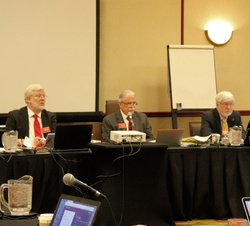
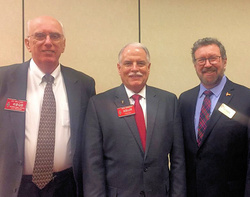
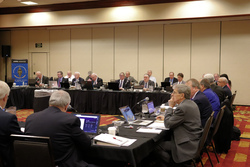 The ad hoc Logbook of The World (LoTW) Committee was elevated to permanent status, reporting to the ARRL Administration and Finance Committee.
The ad hoc Logbook of The World (LoTW) Committee was elevated to permanent status, reporting to the ARRL Administration and Finance Committee.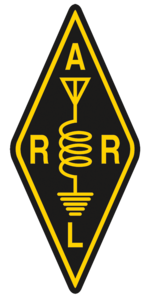 considered recommendations of the Administration and Finance Committee and adopted the ARRL 2019 - 2020 Plan.
considered recommendations of the Administration and Finance Committee and adopted the ARRL 2019 - 2020 Plan..jpg) "Due to the recent government shutdown, applications submitted through the Electronic Batch Filing (EBF) system between the dates of January 3 through January 29 will begin processing over the next several weeks [emphasis added]," the FCC said. "Please, be patient as we are expeditiously working through the backlog of filings." Expeditious it was, taking not weeks but days.
"Due to the recent government shutdown, applications submitted through the Electronic Batch Filing (EBF) system between the dates of January 3 through January 29 will begin processing over the next several weeks [emphasis added]," the FCC said. "Please, be patient as we are expeditiously working through the backlog of filings." Expeditious it was, taking not weeks but days.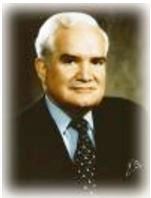
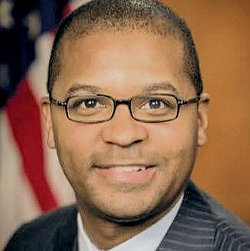 "I am deeply honored to serve as a Commissioner of the Federal Communications Commission, and I thank the President and the United States Senate for this exceptional privilege." Starks said in a statement. "As the last few weeks have affirmed, being a public servant is a calling to serve a mission bigger than yourself. Throughout my career, I have focused on protecting the most vulnerable and holding wrongdoers accountable. In my new role, I shall not only continue to pursue those goals, but also look forward to working with Congress, my fellow Commissioners, and the FCC's outstanding staff."
"I am deeply honored to serve as a Commissioner of the Federal Communications Commission, and I thank the President and the United States Senate for this exceptional privilege." Starks said in a statement. "As the last few weeks have affirmed, being a public servant is a calling to serve a mission bigger than yourself. Throughout my career, I have focused on protecting the most vulnerable and holding wrongdoers accountable. In my new role, I shall not only continue to pursue those goals, but also look forward to working with Congress, my fellow Commissioners, and the FCC's outstanding staff."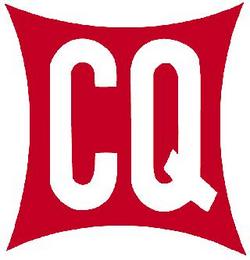 Nominations should clearly indicate that they are for the Contest Hall of Fame and detail the reasons and basis for the nomination.
Nominations should clearly indicate that they are for the Contest Hall of Fame and detail the reasons and basis for the nomination. 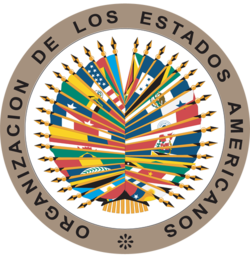 The Inter-American Convention says CEPT-country licensees "shall be entitled to the same rights and privileges enjoyed by holders of the IARP, provided, however, that CEPT accords all holders of the IARP the same rights and privileges enjoyed by holders of the CEPT Amateur Radio license. The Organization of American States (OAS) General Assembly approved the treaty last June; CITEL comes under the OAS umbrella. In addition to Chile, the Dominican Republic and Argentina have signed.
The Inter-American Convention says CEPT-country licensees "shall be entitled to the same rights and privileges enjoyed by holders of the IARP, provided, however, that CEPT accords all holders of the IARP the same rights and privileges enjoyed by holders of the CEPT Amateur Radio license. The Organization of American States (OAS) General Assembly approved the treaty last June; CITEL comes under the OAS umbrella. In addition to Chile, the Dominican Republic and Argentina have signed.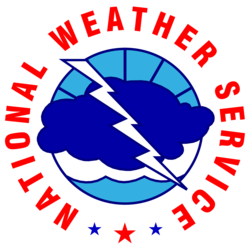 "This service is being terminated because weather information in the current broadcast format does not support frequent-enough updates for changes in marine weather and cannot provide enough detail in the allotted window required by mariners to avoid hazardous weather," NWS said in announcing the discontinuation. "Additionally, alternative technologies and numerous media outlets that provide weather information in various formats have overtaken the need for providing weather information through the NIST frequency signals."
"This service is being terminated because weather information in the current broadcast format does not support frequent-enough updates for changes in marine weather and cannot provide enough detail in the allotted window required by mariners to avoid hazardous weather," NWS said in announcing the discontinuation. "Additionally, alternative technologies and numerous media outlets that provide weather information in various formats have overtaken the need for providing weather information through the NIST frequency signals."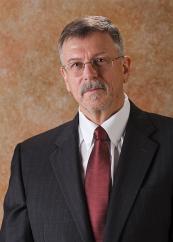
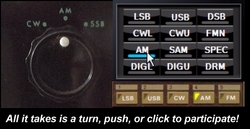
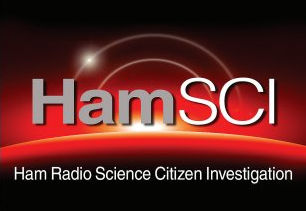
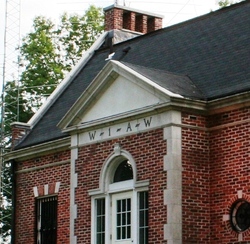 Maxim Memorial Station W1AW is seeking a volunteer station on the US West Coast that can serve as another
Maxim Memorial Station W1AW is seeking a volunteer station on the US West Coast that can serve as another 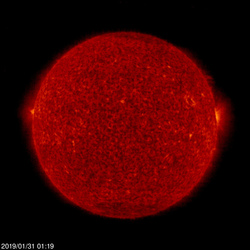 Predicted solar flux is 73 on January 31; 71 on February 1; 72 on February 2 - 7; 69 on February 8 - 12; 72 on February 13 - 27; 70 on February 28 - March 3; 69 on March 4 - 11, and 72 on March 12 - 16.
Predicted solar flux is 73 on January 31; 71 on February 1; 72 on February 2 - 7; 69 on February 8 - 12; 72 on February 13 - 27; 70 on February 28 - March 3; 69 on March 4 - 11, and 72 on March 12 - 16.







